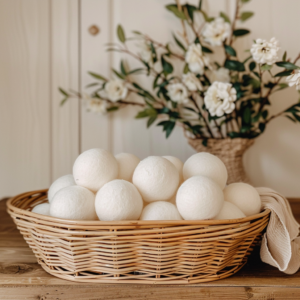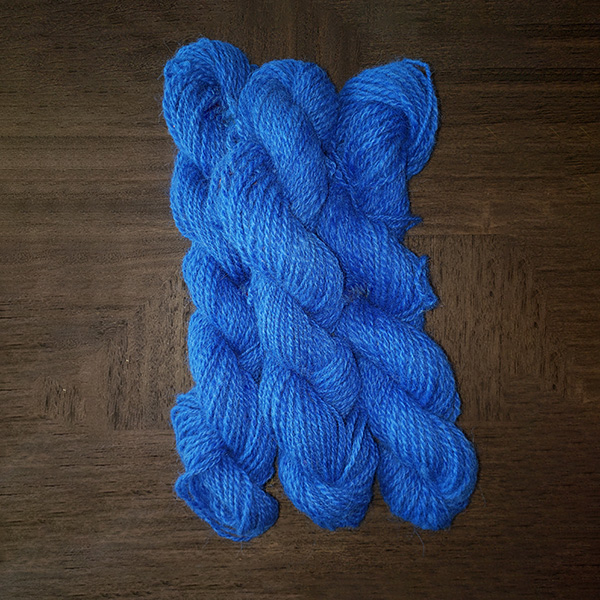Worsted Yarn vs. Woolen Yarn
For fiber enthusiasts and crafters alike, choosing the right yarn is crucial to the success of any project. Among the vast array of options, two terms often arise: worsted yarn and woolen yarn. While they might seem similar to the untrained eye, these yarns are distinct in their characteristics and uses. Let’s dive into the world of fibers and unravel the differences between worsted and woolen yarns.

What is Worsted Yarn?
Worsted yarn is known for its smooth, firm texture and even finish. This yarn undergoes a specific process that aligns the fibers parallel to each other before spinning. The preparation and spinning methods used to create worsted yarn result in a strong, durable, and often finer yarn.
Characteristics of Worsted Yarn
- Smoothness: The parallel alignment of fibers creates a sleek and uniform texture.
- Strength: The compact structure makes it durable and less prone to pilling.
- Definition: Stitches made with worsted yarn are well-defined, making it ideal for detailed patterns and cables.
- Weight: Despite the term “worsted weight” referring to a medium weight, worsted yarn itself can come in various thicknesses. However, worsted-spun yarns are generally denser and heavier.
What is Woolen Yarn?
Woolen yarn, on the other hand, has a soft, airy, and fluffy texture. The fibers are carded in a way that they remain jumbled and disorganized before spinning. This creates a yarn filled with air pockets, resulting in a lofty and warm yarn.
Characteristics of Woolen Yarn
- Softness: The airy, loose structure gives it a cozy, soft feel.
- Warmth: The presence of air pockets within the yarn provides excellent insulation.
- Flexibility: Woolen yarns are stretchy and more forgiving, making them perfect for garments requiring a bit of give.
- Texture: The less uniform fiber alignment results in a more rustic and textured appearance.
Key Differences Between Worsted and Woolen Yarns
- Fiber Preparation
- Worsted Yarn: Fibers are combed to align them parallel before spinning.
- Woolen Yarn: Fibers are carded to keep them jumbled and disorganized.
- Texture and Appearance
- Worsted Yarn: Smooth, firm, and sleek with well-defined stitches.
- Woolen Yarn: Soft, airy, and fluffy with a more textured and rustic look.
- Warmth and Insulation
- Worsted Yarn: Less insulating due to its compact structure.
- Woolen Yarn: More insulating because of the air pockets within the yarn.
- Strength and Durability
- Worsted Yarn: Stronger and more durable, ideal for items that will undergo a lot of wear and tear.
- Woolen Yarn: Softer and more delicate, suitable for cozy garments and accessories.
- Best Uses
- Worsted Yarn: Perfect for projects requiring defined stitches like cables and lace patterns, and items needing durability such as socks, gloves, and fitted garments.
- Woolen Yarn: Ideal for warm, fluffy items like sweaters, scarves, and blankets where warmth and comfort are key.
Choosing the Right Yarn for Your Project
When deciding between worsted and woolen yarn, consider the following:
- Project Type: What are you making? For detailed stitch work, worsted yarn is your best bet. For soft, warm, and flexible items, woolen yarn is the way to go.
- Desired Texture: Do you want a smooth, polished finish or a cozy, rustic look?
- Durability Needs: Will the item face a lot of wear and tear? Choose worsted for durability and woolen for gentle, warm items.
Conclusion
Both worsted and woolen yarns have their unique benefits and ideal uses. Understanding their differences helps you select the best yarn for your project, ensuring a successful and satisfying crafting experience. Whether you’re knitting a detailed sweater or a fluffy scarf, the right yarn choice can make all the difference.
So next time you’re planning a project, take a moment to consider the qualities of worsted and woolen yarns. Happy crafting!
-
Sale!

Yarn Dyeing Service (Solid Color)
$35.00 – $38.00 Select options This product has multiple variants. The options may be chosen on the product page -

Cozy Wool Handmade Reversible Beanie
$40.00 – $50.00 Select options This product has multiple variants. The options may be chosen on the product page -

Eco-Friendly Handmade Alpaca Dryer Balls (Set of 3)
$24.00 Select options This product has multiple variants. The options may be chosen on the product page -
Sale!

Fiber Blending Service
$28.00Original price was: $28.00.$25.00Current price is: $25.00. Add to cart
About Us
We are a women-owned and operated boutique fiber mill in Ramona, CA where we also raise fiber animals.
All Contacts
- 1672 Main Street, STE E223
- Ramona, CA 92065
- info@shearconfectionfibermill.com
- 09 am - 05 pm closed Sunday
- Copyright (c) 2024 ShearConfectionFiberMill.com
- info@shearconfectionfibermill.com


















